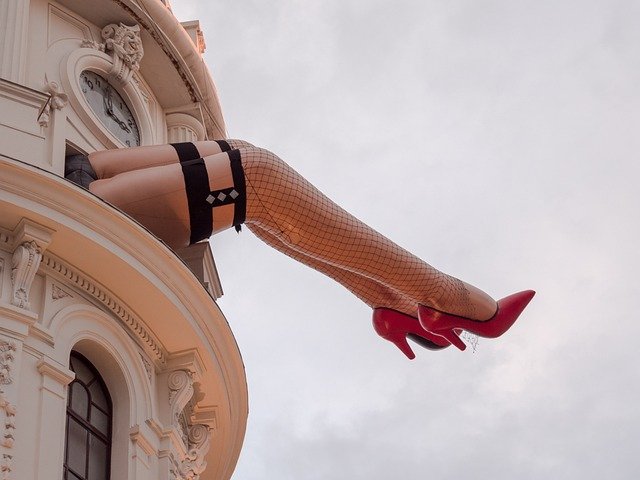Introduction
Cabarets in France have a rich history and cultural significance, captivating audiences with their unique blend of music, dance, comedy, and theatrical performances. Originating in the late 19th century, these establishments have evolved over time, leaving an indelible mark on French entertainment and inspiring similar venues worldwide. This article delves into the origin of the term “cabaret,” traces the fascinating history of cabarets in France, explores their development, highlights their global influence, and provides recommendations for notable cabaret addresses.
The Origin of the Term “Cabaret”
The term “cabaret” finds its roots in France, deriving from the French word for “tavern.” Initially associated with wine cellars, cabarets gradually transformed into venues that showcased various forms of artistic expression, becoming synonymous with vibrant entertainment and cultural revolution. In the 1880s, Le Chat Noir in Paris became one of the first modern cabarets, hosting poets, musicians, and performers who pushed the boundaries of traditional art forms.
Evolution of French Cabarets
Tracing back to the late 19th century, French cabarets experienced a surge in popularity during the Belle Époque. These establishments served as artistic havens, bringing together poets, musicians, and performers who challenged societal norms through their provocative acts. Le Chat Noir, founded by Rodolphe Salis in 1881, was a gathering place for bohemian artists and intellectuals, hosting avant-garde performances, poetry readings, and satirical sketches.
The early 20th century witnessed the rise of iconic cabarets such as the Moulin Rouge, which opened its doors in 1889. Known for its extravagant shows, can-can dancers, and vibrant atmosphere, the Moulin Rouge became a symbol of the Parisian cabaret scene. Other notable cabarets of this era include Folies Bergère and Lido, each with its own distinctive style and artistic offerings.
Development and Modernization
As the 20th century progressed, cabarets in France evolved to reflect changing cultural and artistic trends. The influence of American jazz in the 1920s led to the emergence of jazz-infused cabarets, such as Le Boeuf sur le Toit, where musicians and dancers showcased their talents in an energetic and improvisational atmosphere.
During the mid-20th century, cabarets began to incorporate burlesque shows, characterized by provocative and humorous performances. One notable example is the Crazy Horse, which opened in 1951 and became renowned for its sensual and visually stunning acts.
With the advent of technological advancements, cabarets embraced innovations in sound systems and lighting, enhancing the overall experience for audiences. The incorporation of modern dance, acrobatics, and multimedia elements further expanded the possibilities for artistic expression within cabaret performances.
Cabarets Beyond France
French cabarets have exerted a significant influence on entertainment venues worldwide. During the Prohibition era in the United States, French-style cabarets emerged as speakeasies, providing a refuge for people seeking lively entertainment and a vibrant social scene. New York’s famous Cotton Club and the Tropicana Club in Havana, Cuba, drew inspiration from the French cabaret tradition, incorporating elements of music, dance, and theatrical performances.
In Europe, Berlin’s cabaret scene during the 1920s gained international recognition, with venues like the Eldorado and Wintergarten showcasing avant-garde performances, political satire, and daring acts that challenged societal norms.
Notable Cabaret Addresses in France
For those seeking to immerse
themselves in the captivating world of French cabarets, here are some notable addresses to consider:
– Moulin Rouge (Paris): Located in the vibrant Montmartre district of Paris, the Moulin Rouge remains an iconic symbol of French cabaret. With its signature windmill and dazzling shows featuring can-can dancers and international performers, it offers an unforgettable experience.
– Lido (Paris): Situated on the Champs-Élysées, the Lido is renowned for its extravagant stage productions, featuring glamorous costumes, talented dancers, and stunning visual effects. It has been entertaining audiences since 1946.
– Crazy Horse (Paris): Known for its seductive and avant-garde performances, the Crazy Horse offers a unique and sensual cabaret experience, combining artistic choreography, lighting effects, and intimate settings.
– Paradis Latin (Paris): Established in 1889, Paradis Latin is one of the oldest cabarets in Paris. Its ornate Belle Époque decor and lively shows featuring dancers, acrobats, and magicians create a captivating atmosphere.
– Le Chat Noir (Paris): While the original Le Chat Noir closed its doors in 1897, a modern incarnation pays homage to its legendary status. Located in the Montmartre district, it continues the tradition of hosting eclectic performances, including music, comedy, and poetry readings.
Conclusion:
Cabarets in France have left an indelible mark on the country’s cultural landscape, evolving from wine cellars to iconic entertainment venues. From their origins in the late 19th century to their global influence and contemporary presence, these establishments continue to captivate audiences with their artistic performances. Whether visiting Paris or exploring other regions of France, experiencing a cabaret is a must for anyone seeking an unforgettable night of music, dance, and entertainment. The recommended addresses provide a taste of the diverse and enchanting world of French cabarets, each offering a unique and immersive experience for visitors.







